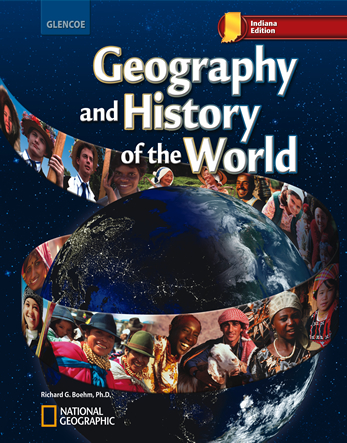

Geography and History of the World © 2010 Indiana EditionChapter 10: The Region Today: Latin AmericaChapter OverviewsMost of Latin America’s people live in cities, yet most of the region’s countries rely heavily on agriculture. Latin America today faces the challenge of developing modern, industrial economies that promote regional and global trade, but do not destroy its natural resources.The Economy Most of the region's countries rely on agriculture for a major portion of their incomes, exporting such products as bananas, sugarcane, and coffee. Cash crops are raised on latifundia, large commercial farms. Countries depending on only one or two export products can experience hardships in case of crop failures. Industrial growth in the region is limited by high mountains, dense forests, a drain on profits by foreigners, and political instability. Some Latin American countries, however, are developing industries. Many foreign firms have built manufacturing plants in the region. The North American Free Trade Agreement (NAFTA) has helped boost Mexico's economy. Many Latin American countries are struggling to repay the debts they have accumulated while borrowing funds from foreign countries to finance their industrial development. Because of imposing physical barriers, only a few major highway systems can be found in Latin America. Some countries have well-developed rail systems, while inland waterways remain important for transportation. An emerging communications industry provides newspapers, television, and radio to most Latin Americans. Cellular and satellite services have reduced the cost of infrastructure and helped many people afford access. The economies in most Latin American countries reflect a historic dependence on farming as well as increasing reliance on a developing industrial sector. Countries in the region are faced with the problem of trying to improve the economic conditions of their people without doing irreparable harm to the environment. People and Their Environment The rain forests of the Amazon Basin, like those in other parts of the world, are rapidly disappearing. Countries of the Amazon Basin has to balance the need to preserve the forests with economic development, which means cutting down large tracts of forests to make way for settlements, farms and ranches, roads, and access to natural resources. Rapidly growing cities face problems of overcrowding, air pollution, and inadequate resources. Regional cooperation is addressing border disputes and other issues. Latin America is vulnerable to natural disasters, such as earthquakes, volcanic eruptions, and hurricanes, and needs to deal with air and water pollution. |  |















